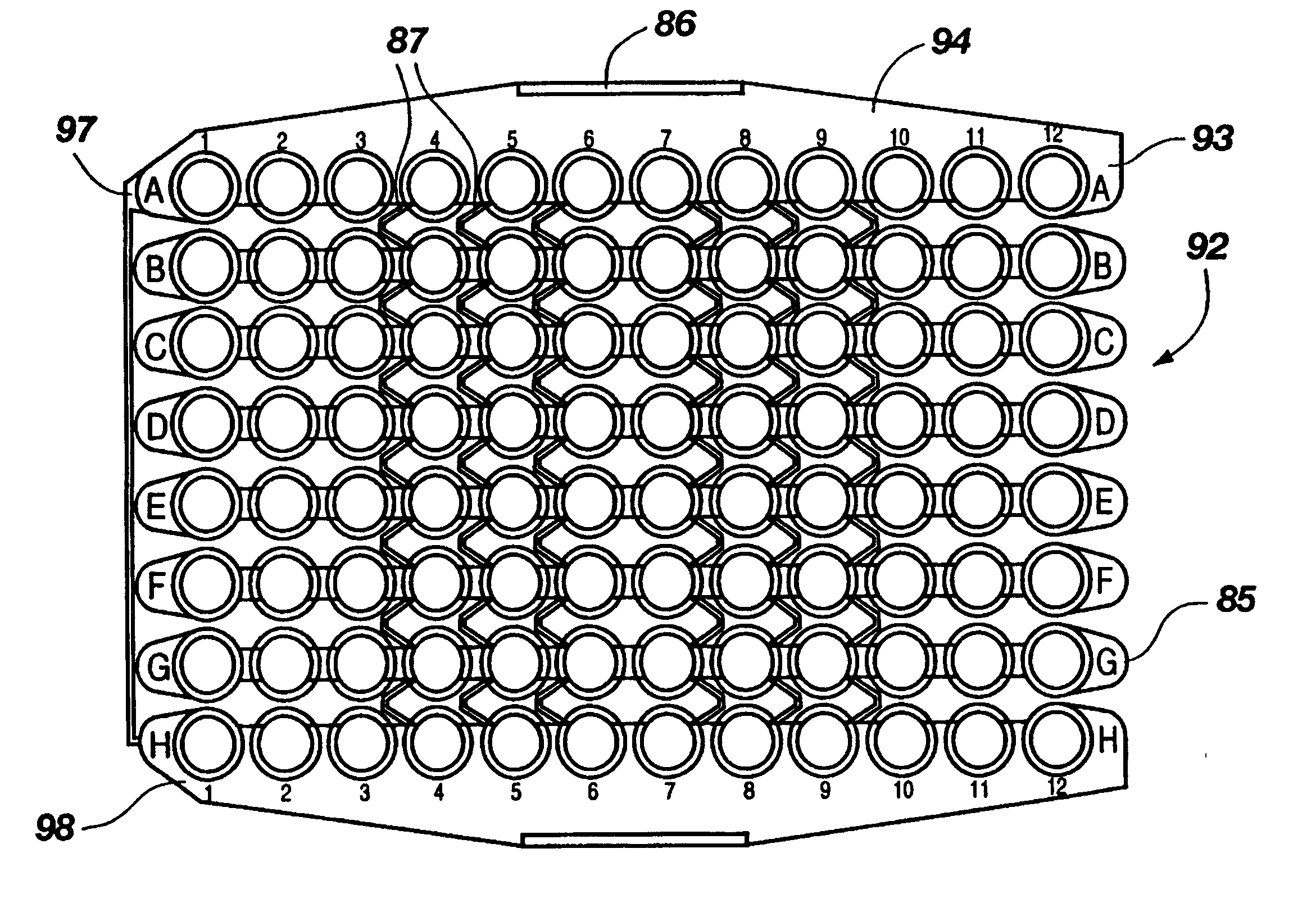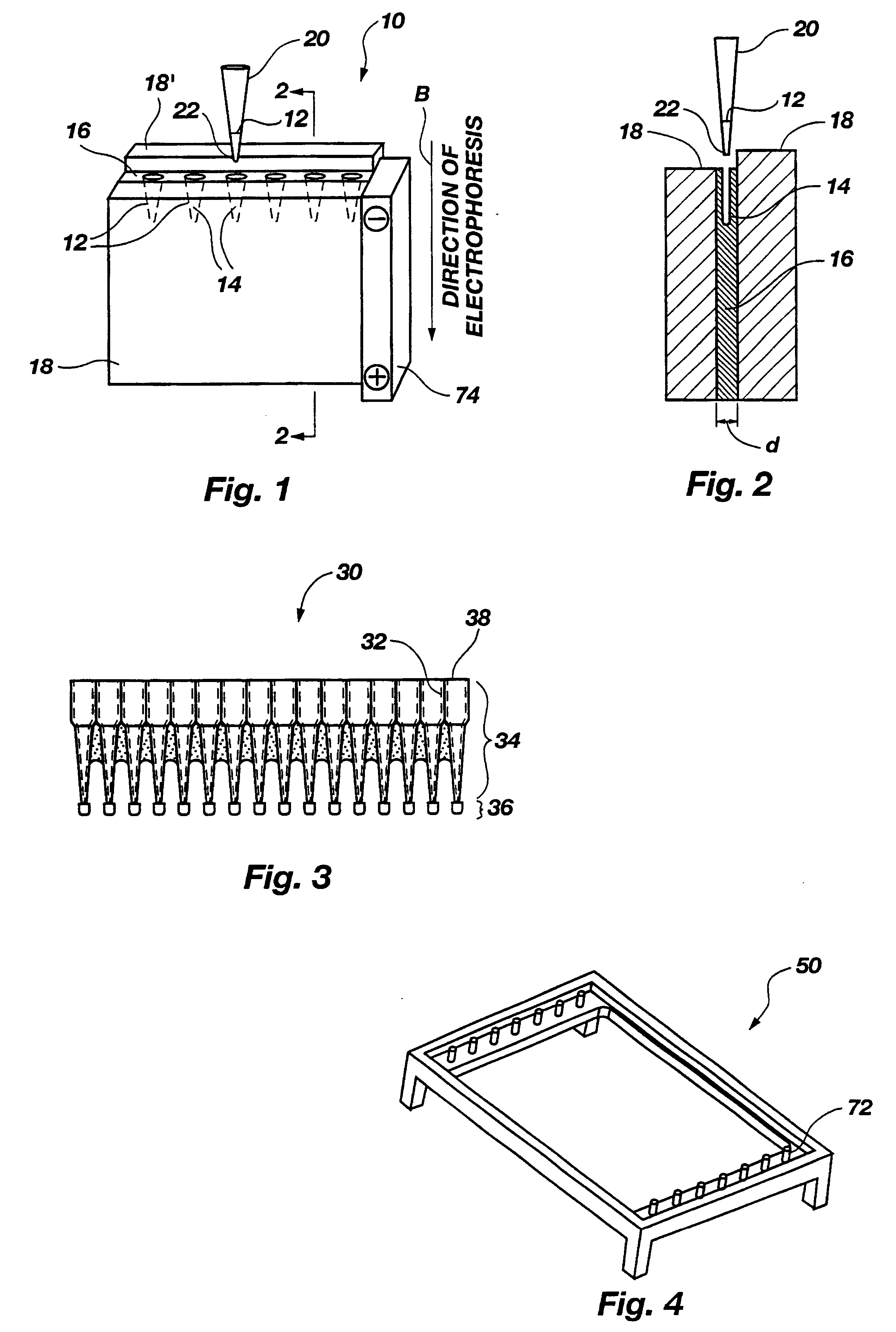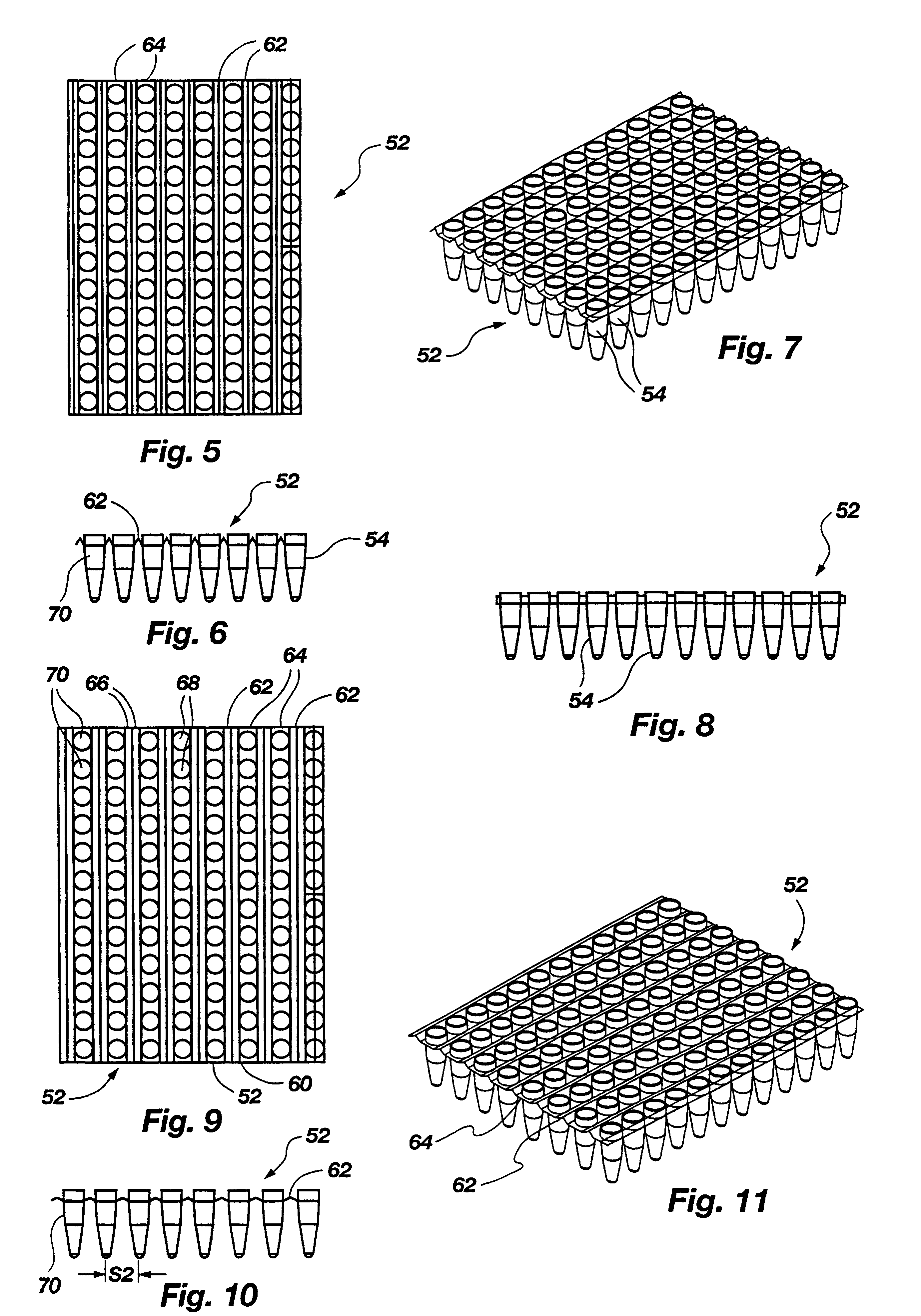Expandable sequencing tray
a sequencing tray and expandable technology, applied in the field of expandable sequencing tray, can solve the problems of increasing the spacing between gel wells, reducing the spacing, and consuming a lot of labor
- Summary
- Abstract
- Description
- Claims
- Application Information
AI Technical Summary
Benefits of technology
Problems solved by technology
Method used
Image
Examples
Embodiment Construction
FIGS. 1 and 2 illustrate an electrophoresis device, generally 10, receiving biological sample material 12 in individual gel wells 14 formed within a thin film 16 of sequencing gel held sandwiched between spaced structural plates 18. A potential is applied across the gel by means of a fixture 19. Charge-carrying molecules forming the sample 12 migrate downwardly in the direction of arrow B, and are separated under the influence of the applied voltage in accordance with their respective molecular weights. The samples 12 are dispensed into individual wells 14 by individual micro pipette tips 20, which are conventionally carried by the head of a pipettor (not shown). The plates 18 are separated by a distance d (FIG. 2), which is typically quite small; e.g., 0.20 mm.
FIG. 3 illustrates one embodiment of a pipette tip device, generally 30. A plurality of interconnected tips 32 are disposed in substantially parallel orientation and in side-by-side alignment. The tips 32 are hollow, and each...
PUM
| Property | Measurement | Unit |
|---|---|---|
| center-to-center distance | aaaaa | aaaaa |
| center-to-center distance | aaaaa | aaaaa |
| distance | aaaaa | aaaaa |
Abstract
Description
Claims
Application Information
 Login to View More
Login to View More - R&D
- Intellectual Property
- Life Sciences
- Materials
- Tech Scout
- Unparalleled Data Quality
- Higher Quality Content
- 60% Fewer Hallucinations
Browse by: Latest US Patents, China's latest patents, Technical Efficacy Thesaurus, Application Domain, Technology Topic, Popular Technical Reports.
© 2025 PatSnap. All rights reserved.Legal|Privacy policy|Modern Slavery Act Transparency Statement|Sitemap|About US| Contact US: help@patsnap.com



